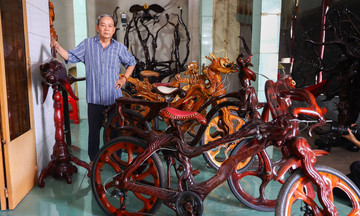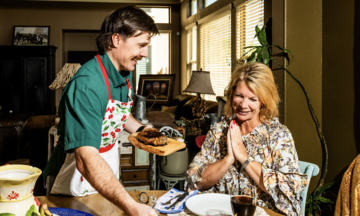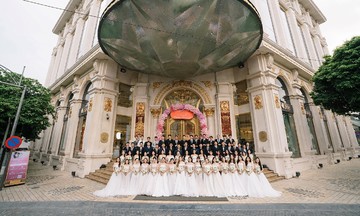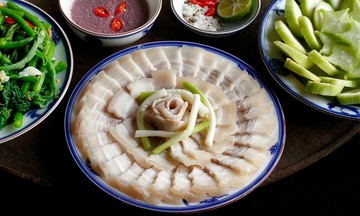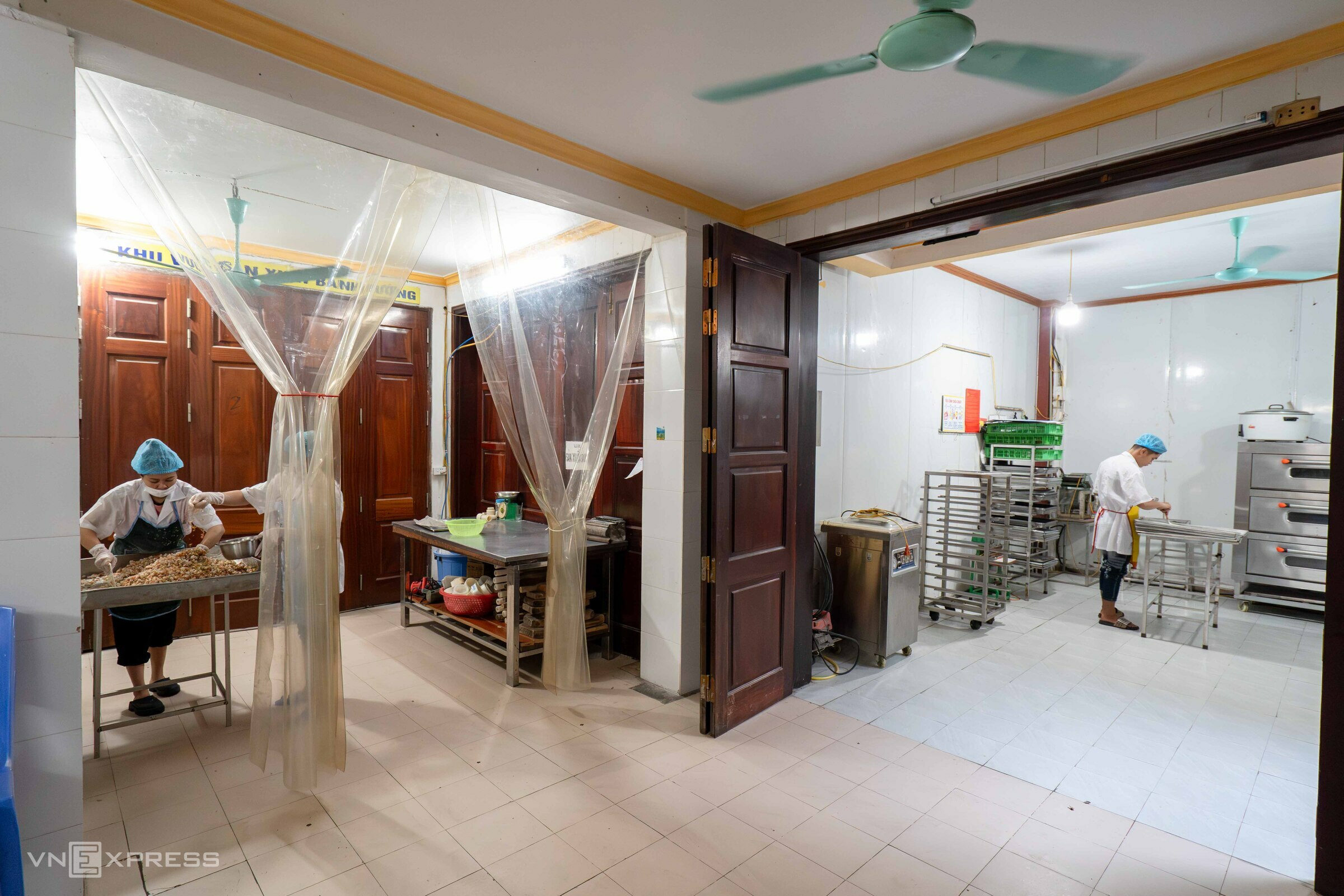 |
Each finished mooncake weighs between 100 and 200 grams. The divided filling portions are placed on metal trays. (Photo: Hoang Giang) |
The bakery is located in Xuan Dinh ward, home to a traditional village specializing in cakes, jams, and candies. The mooncake tradition itself dates back almost 200 years.
Sinh Dung bakery is divided into small curtained rooms separating the areas for making baked mooncakes, sticky rice mooncakes, and the baking room. The sticky rice mooncake area is air-conditioned, maintaining a low temperature from storage to preparation.
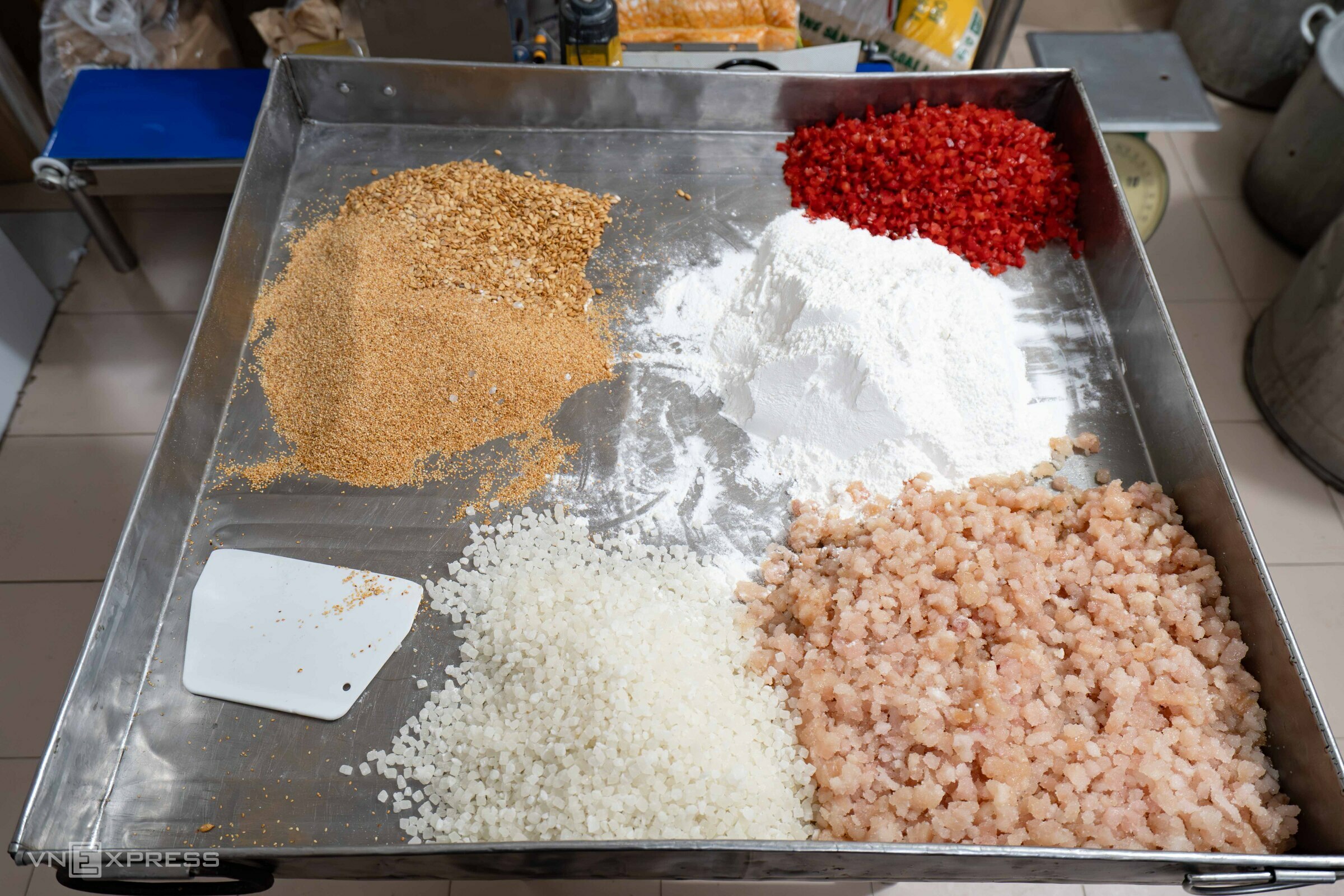 |
The dough, a mixture of rice flour, sugar, and baking powder, is divided using molds. Baked mooncakes are typically 60% filling and 40% dough, while sticky rice mooncakes are 60% dough and 40% filling. (Photo: Hoang Giang) |
Traditional baked mooncake production involves mixing the filling, dividing the dough, portioning the filling, wrapping the cakes, molding, and baking twice.
Traditional mooncakes are a popular treat. The filling mixture includes pork fat, Chinese sausage, lime leaves, and rice wine. Compared to earlier times, the amount of pork fat has been reduced to meet current dietary preferences.
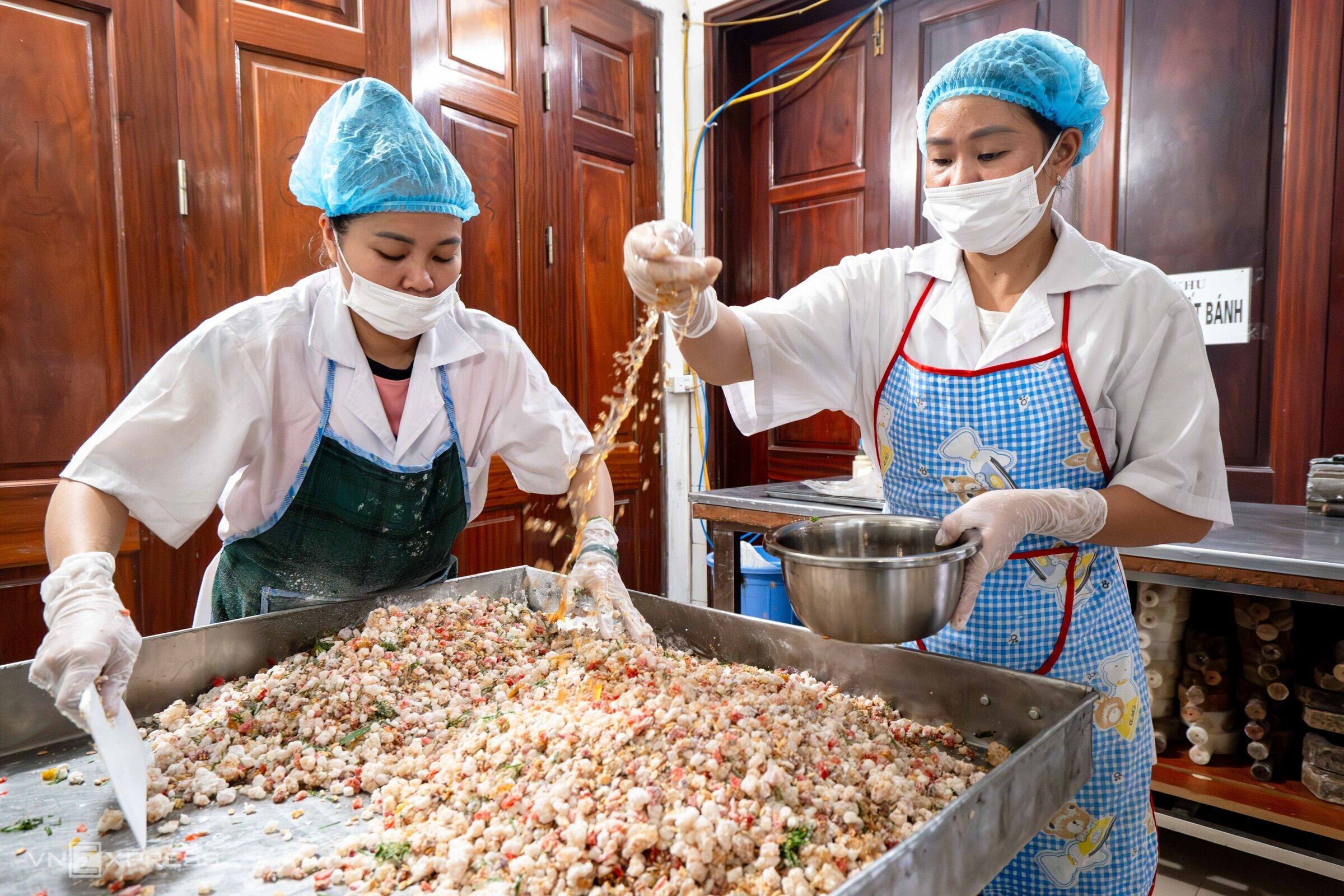 |
After the filling is wrapped in dough, the cakes are placed in molds of various sizes and patterns. (Photo: Hoang Giang) |
“Mooncakes used to be preserved with a lot of sugar, giving them a very sweet taste. Now, the sugar content is reduced during the process, starting with the ingredients," said Pham Duy Si, the shop manager.
This year, the bakery hired 6 bakers, most of whom have worked there in previous years. Newcomers receive detailed instructions to ensure consistent quality.
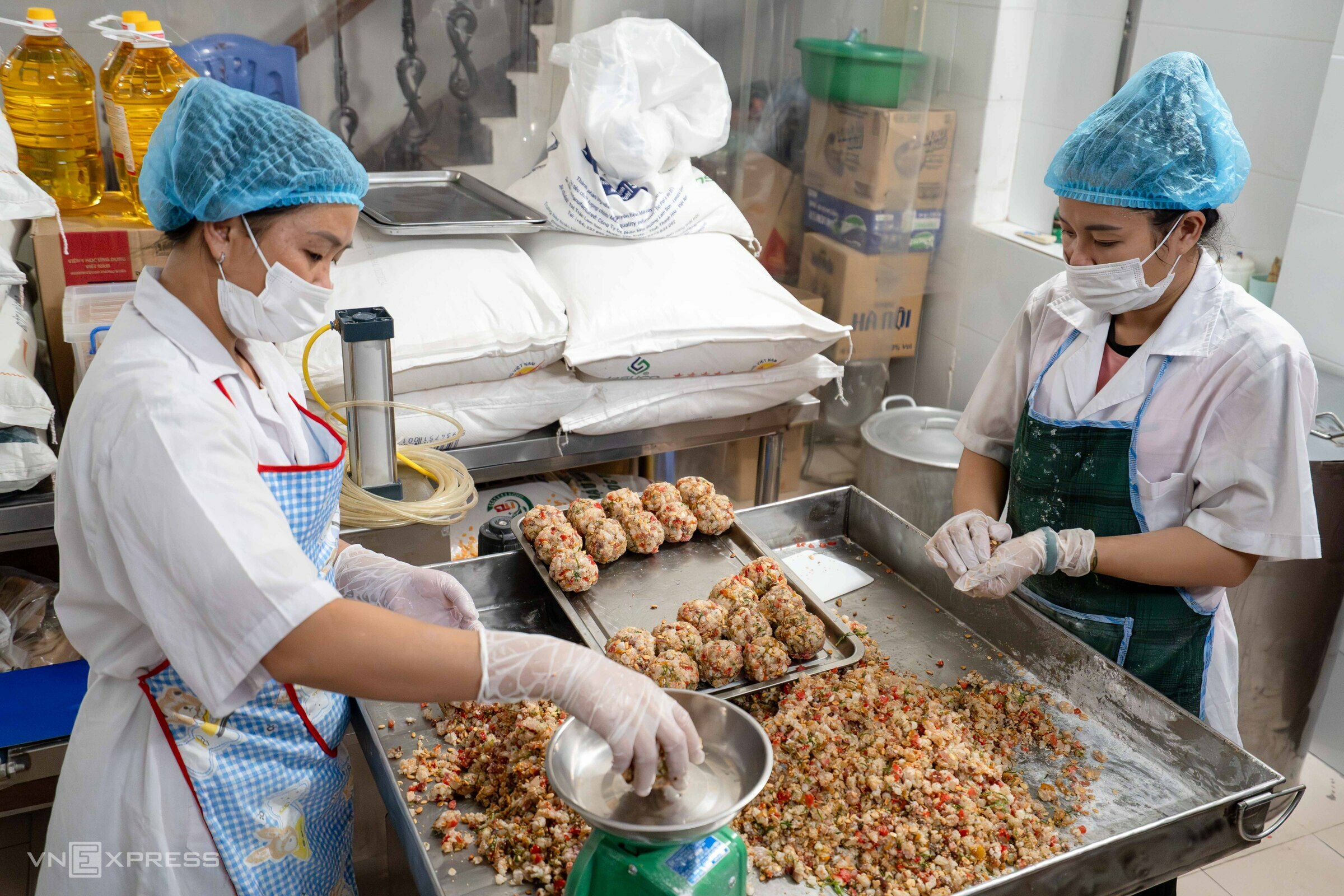 |
Consumers generally prefer traditional mooncakes. However, some customers order larger cakes, such as 5 kg carp-shaped ones, for ceremonies. These large cakes take about 1.5 hours to make and cost between 750,000 and 900,000 VND depending on the filling. (Photo: Hoang Giang) |
Bakers use scales to control the filling weight.
Xuan Dinh village’s traditional mooncakes feature two main fillings: mixed nuts and seeds, and mung bean. As people's lives improved, char siu with roasted chicken and ham were added. In the past, 5 mooncakes were typically wrapped in newspaper and tied with string.
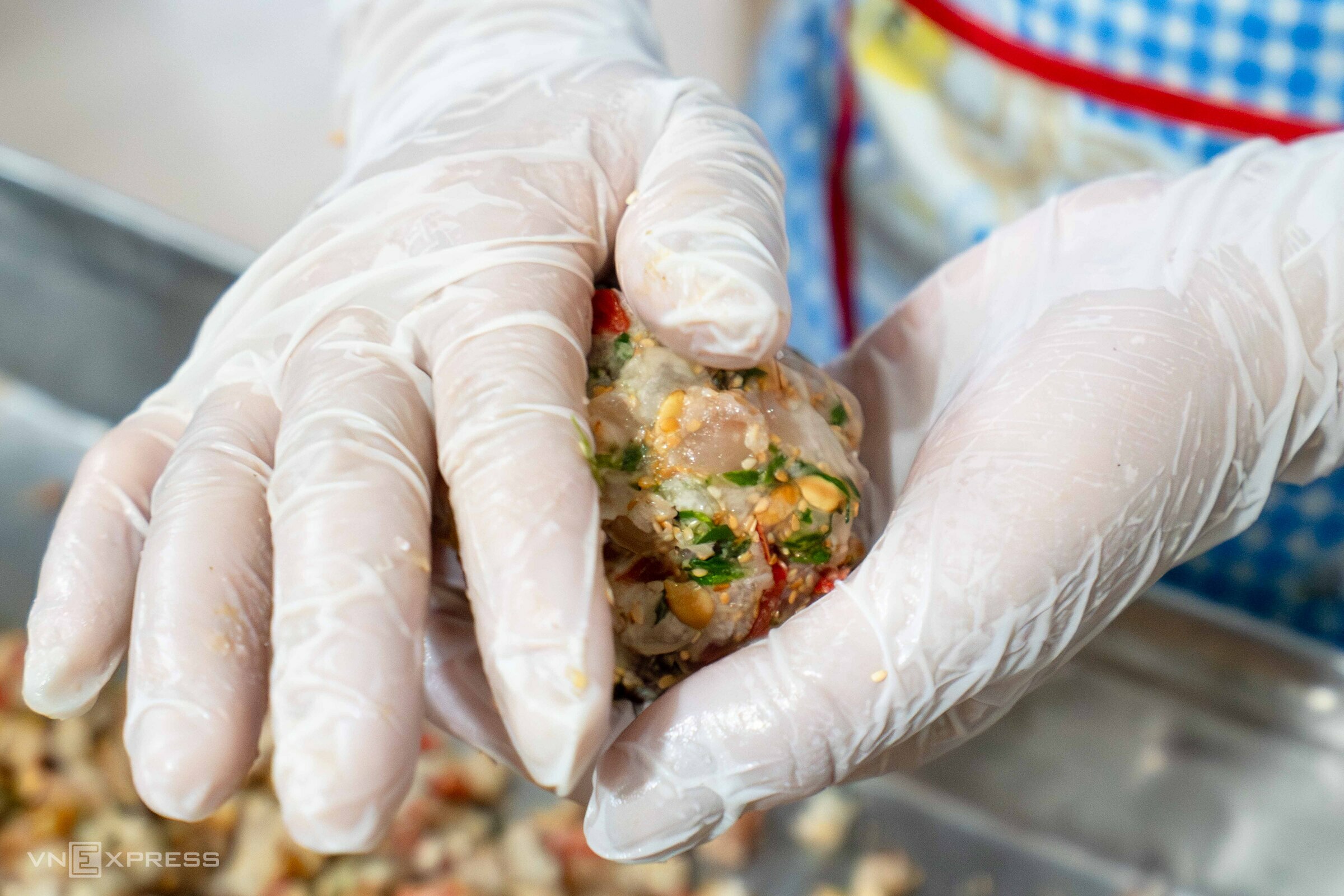 |
Each finished mooncake weighs between 100 and 200 grams. The divided filling portions are placed on metal trays. (Photo: Hoang Giang)
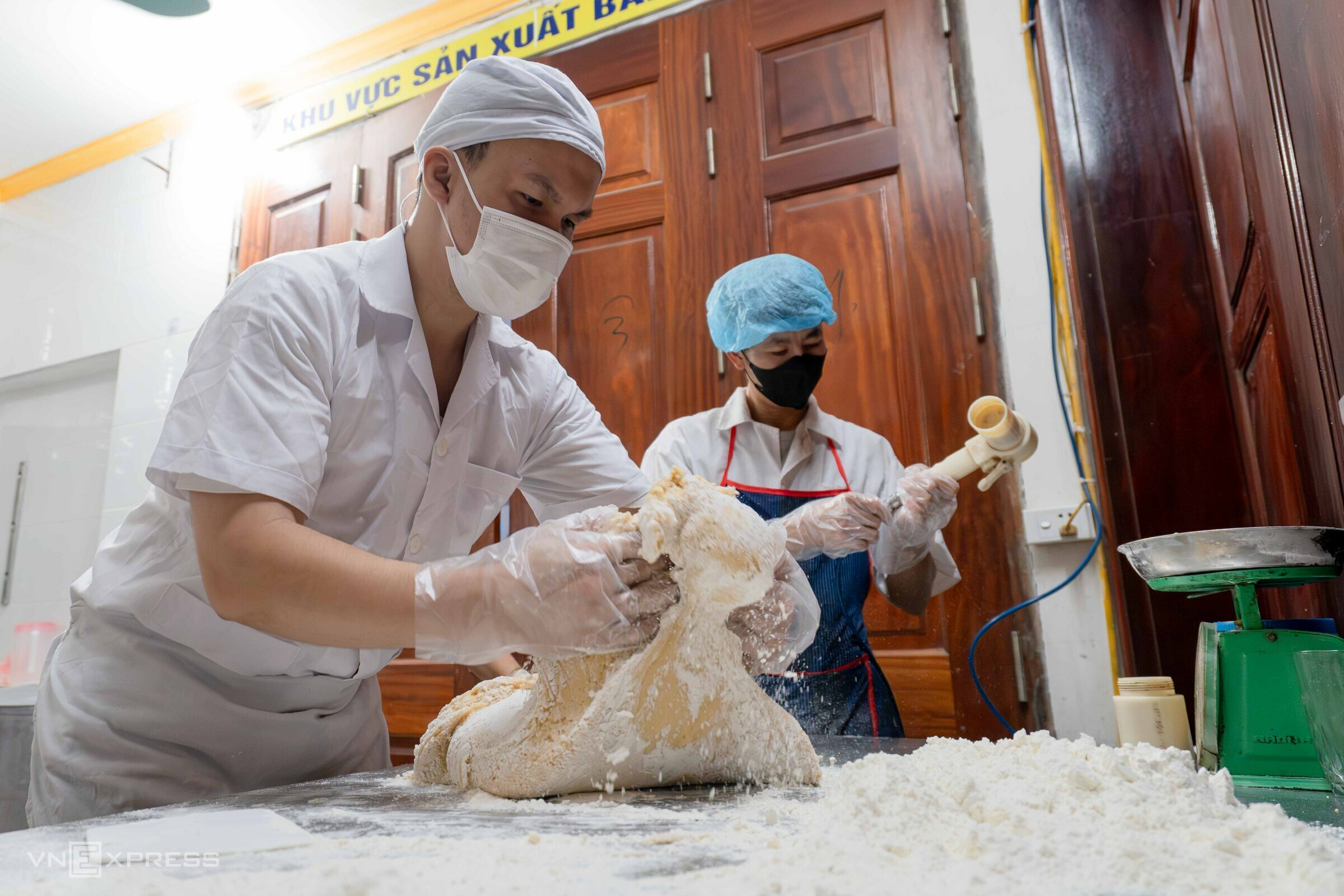 |
The dough, a mixture of rice flour, sugar, and baking powder, is divided using molds. Baked mooncakes are typically 60% filling and 40% dough, while sticky rice mooncakes are 60% dough and 40% filling. (Photo: Hoang Giang)
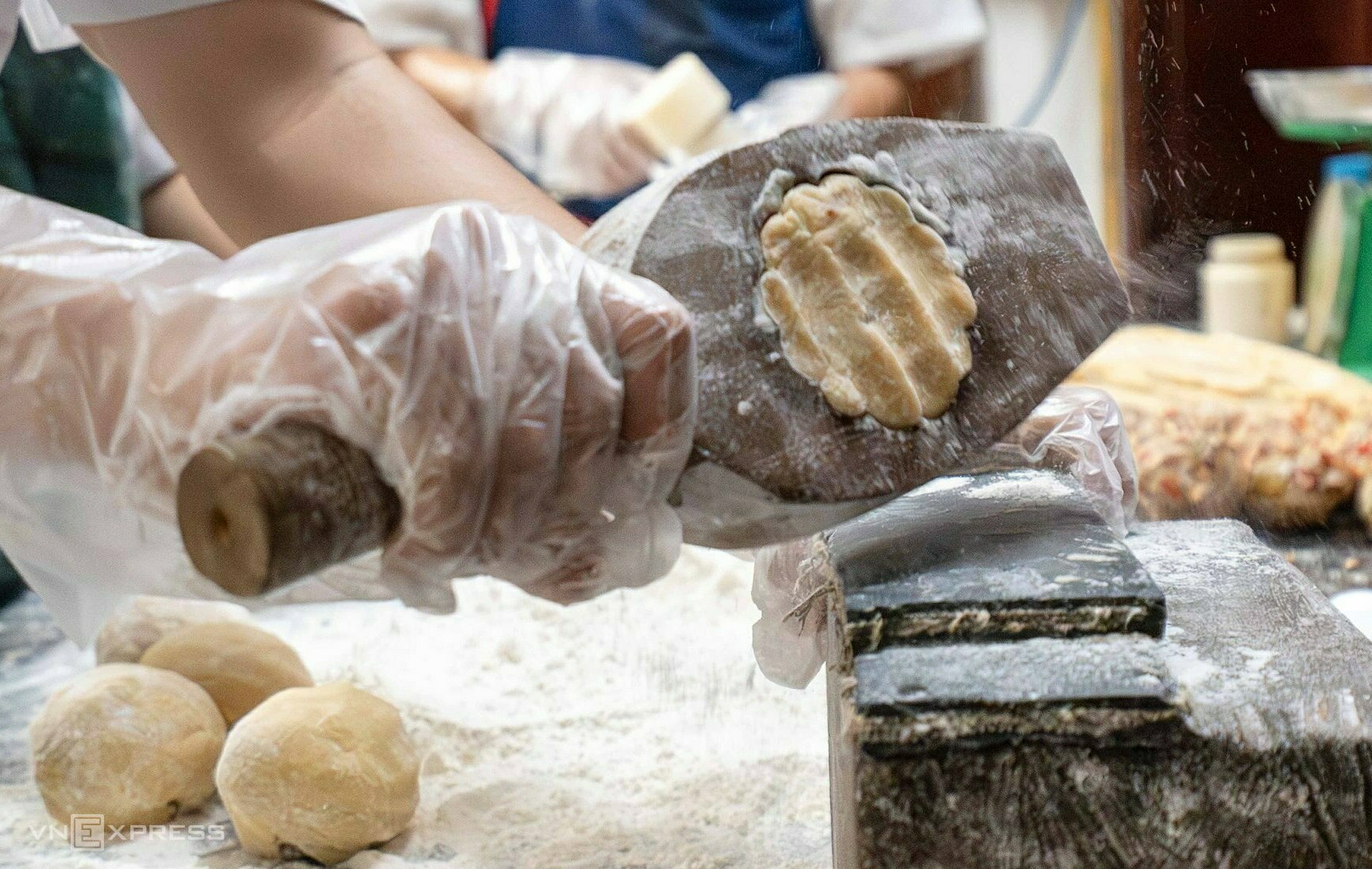 |
After the filling is wrapped in dough, the cakes are placed in molds of various sizes and patterns. (Photo: Hoang Giang)
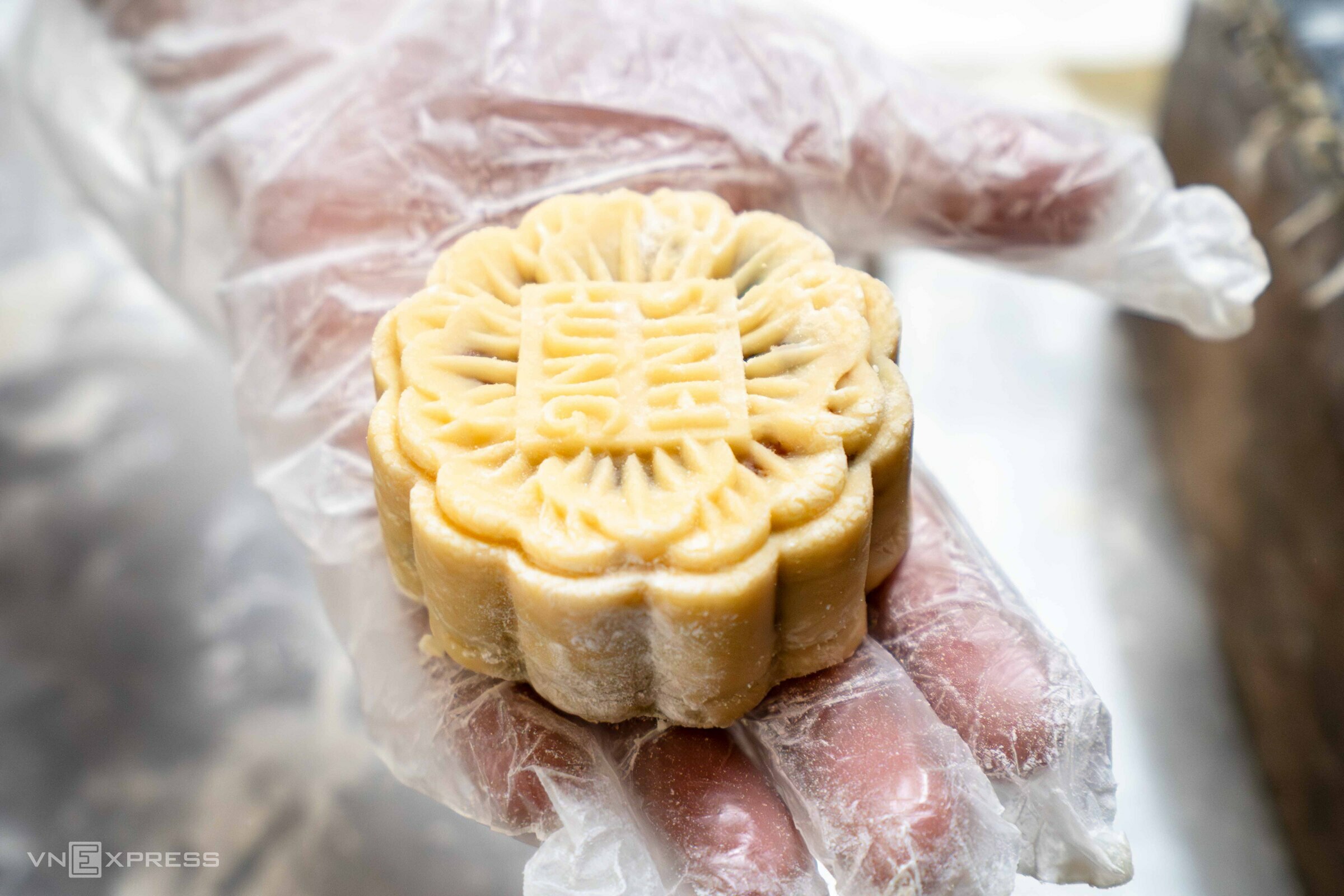 |
Consumers generally prefer traditional mooncakes. However, some customers order larger cakes, such as 5 kg carp-shaped ones, for ceremonies. These large cakes take about 1.5 hours to make and cost between 750,000 and 900,000 VND depending on the filling. (Photo: Hoang Giang)
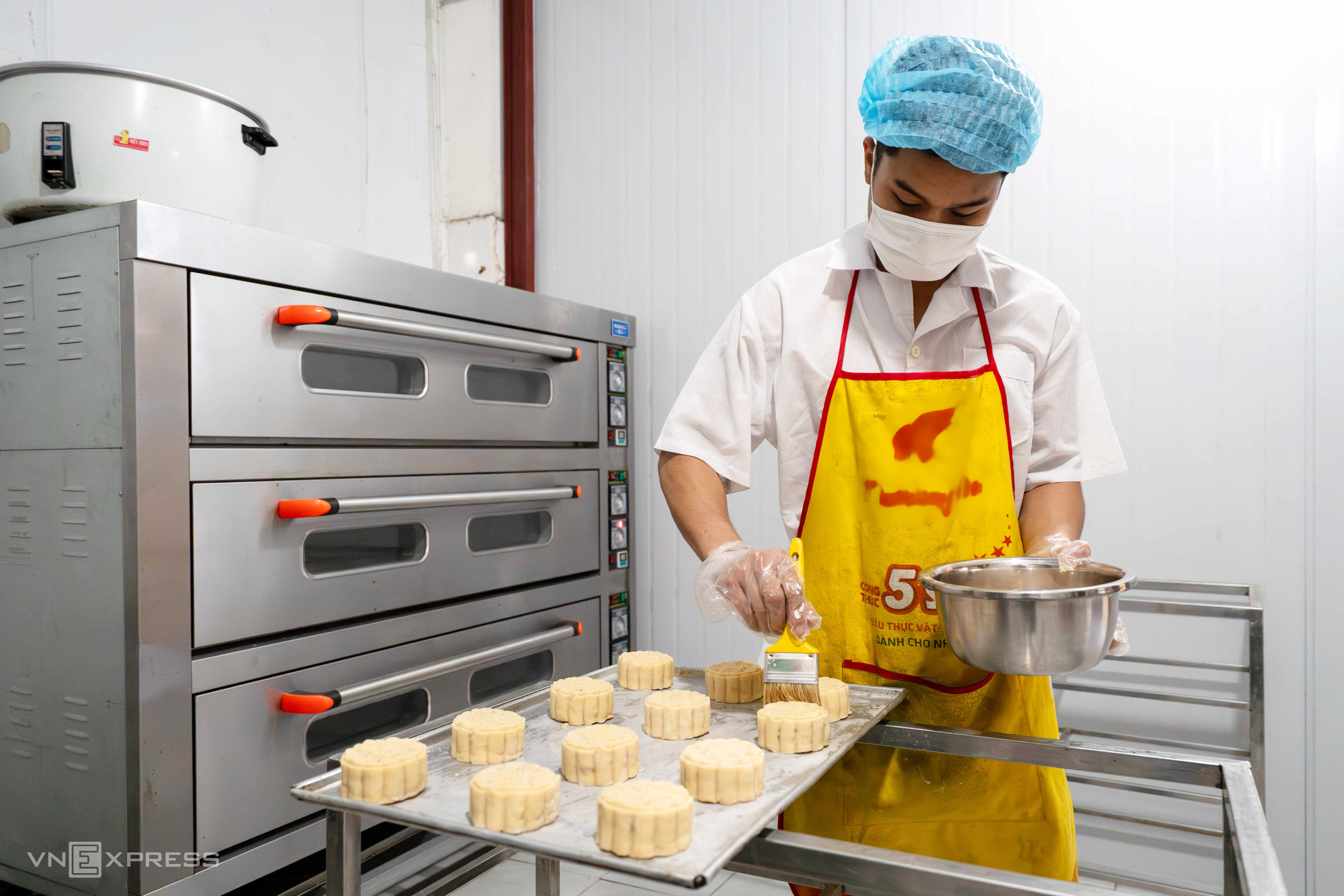 |
Before baking, the bakers grease the trays. Each tray bakes for about 40 minutes and holds 12-20 mooncakes, depending on their size, to ensure even cooking.
The cakes are baked twice. During the second baking, egg yolk is brushed on for a golden color.
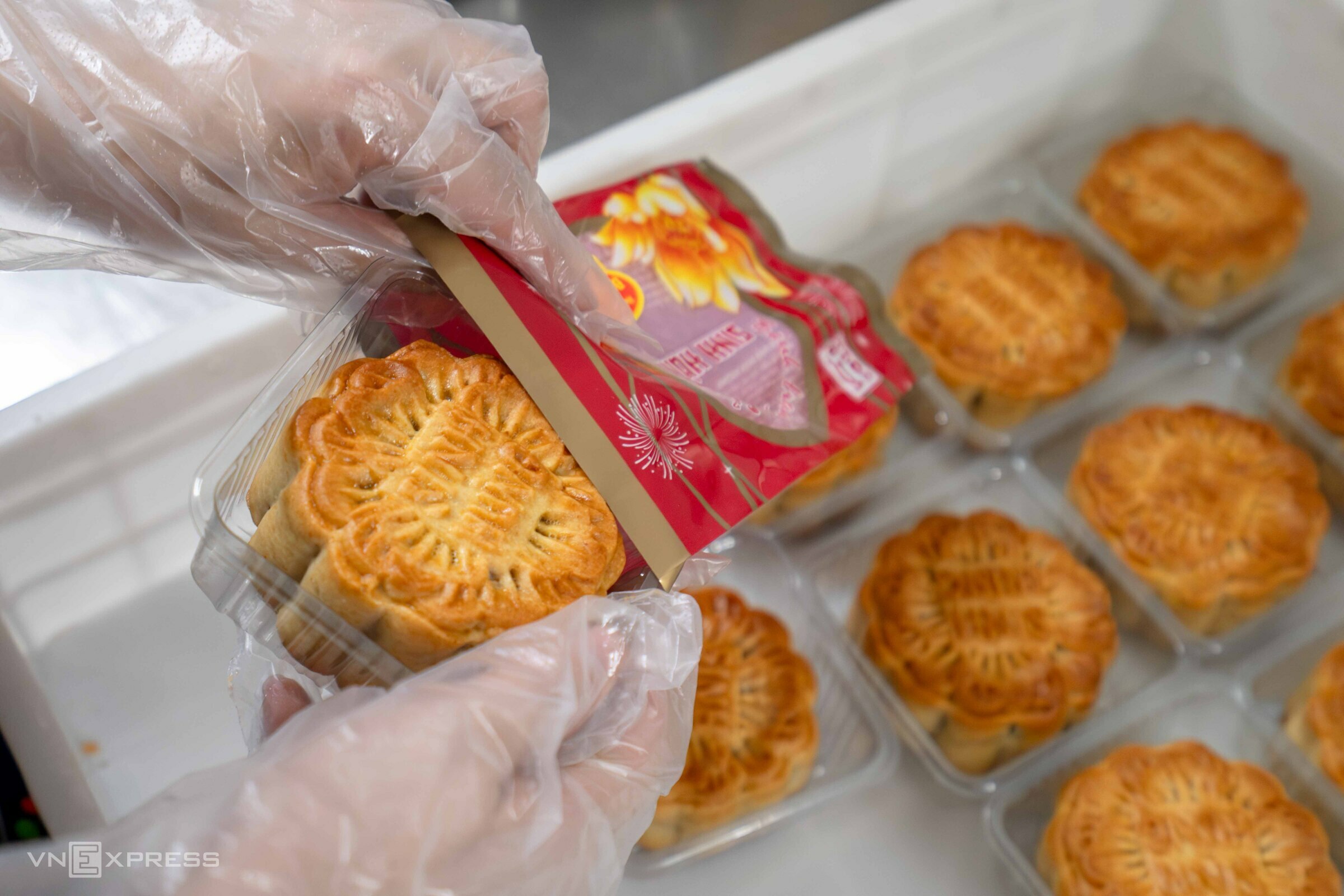 |
After baking, the hot mooncakes are placed on multi-tiered carts to cool for about 15 minutes before packaging.
The bakery uses a packaging machine. Sticky rice mooncakes last for 10 days, while baked mooncakes last longer, around 20 days.
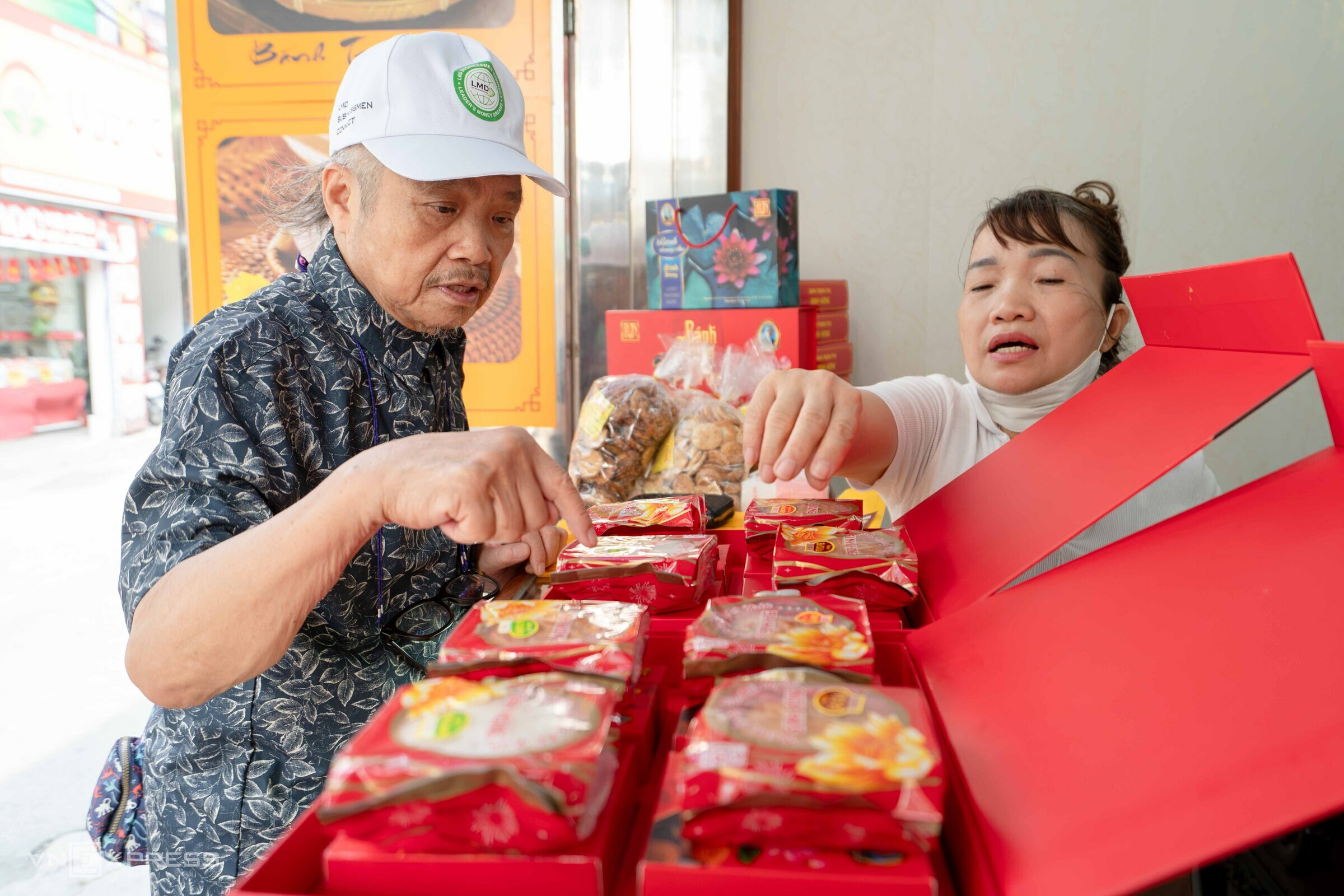 |
During peak season, from the beginning of the 8th lunar month to the Mid-Autumn Festival, the bakery sells 2,000-3,000 mooncakes daily.
First-time customer Do Hung Chien was impressed by the design and quality. “The mooncakes come in many varieties, with beautiful packaging, suitable for gifts," he said.
By Hoang Giang




